Christoph Auer
IBM Research
SmolDocling: An ultra-compact vision-language model for end-to-end multi-modal document conversion
Mar 14, 2025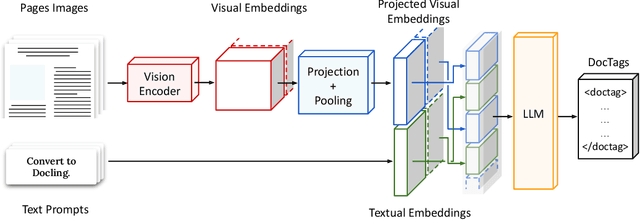
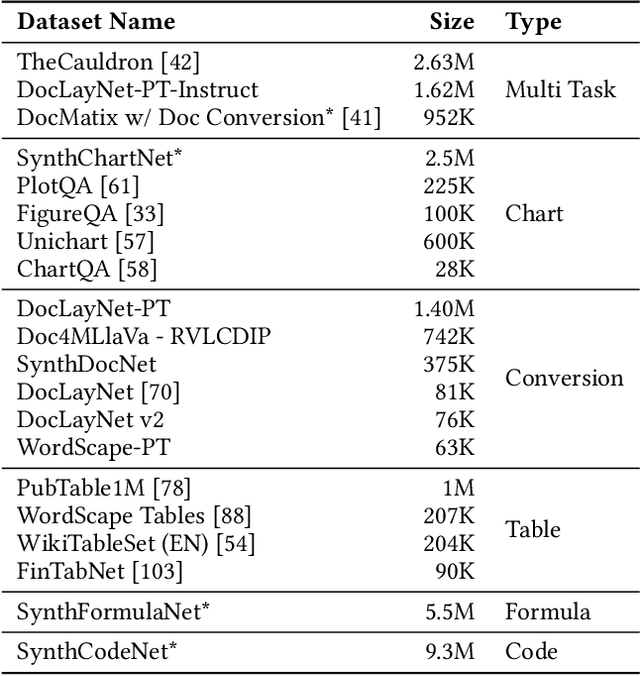
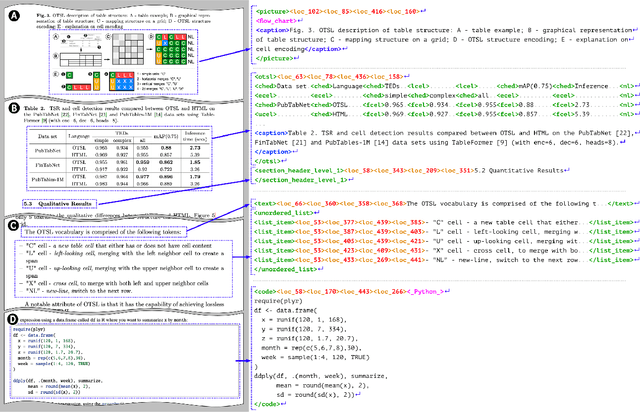

Abstract:We introduce SmolDocling, an ultra-compact vision-language model targeting end-to-end document conversion. Our model comprehensively processes entire pages by generating DocTags, a new universal markup format that captures all page elements in their full context with location. Unlike existing approaches that rely on large foundational models, or ensemble solutions that rely on handcrafted pipelines of multiple specialized models, SmolDocling offers an end-to-end conversion for accurately capturing content, structure and spatial location of document elements in a 256M parameters vision-language model. SmolDocling exhibits robust performance in correctly reproducing document features such as code listings, tables, equations, charts, lists, and more across a diverse range of document types including business documents, academic papers, technical reports, patents, and forms -- significantly extending beyond the commonly observed focus on scientific papers. Additionally, we contribute novel publicly sourced datasets for charts, tables, equations, and code recognition. Experimental results demonstrate that SmolDocling competes with other Vision Language Models that are up to 27 times larger in size, while reducing computational requirements substantially. The model is currently available, datasets will be publicly available soon.
Docling: An Efficient Open-Source Toolkit for AI-driven Document Conversion
Jan 27, 2025



Abstract:We introduce Docling, an easy-to-use, self-contained, MIT-licensed, open-source toolkit for document conversion, that can parse several types of popular document formats into a unified, richly structured representation. It is powered by state-of-the-art specialized AI models for layout analysis (DocLayNet) and table structure recognition (TableFormer), and runs efficiently on commodity hardware in a small resource budget. Docling is released as a Python package and can be used as a Python API or as a CLI tool. Docling's modular architecture and efficient document representation make it easy to implement extensions, new features, models, and customizations. Docling has been already integrated in other popular open-source frameworks (e.g., LangChain, LlamaIndex, spaCy), making it a natural fit for the processing of documents and the development of high-end applications. The open-source community has fully engaged in using, promoting, and developing for Docling, which gathered 10k stars on GitHub in less than a month and was reported as the No. 1 trending repository in GitHub worldwide in November 2024.
Docling Technical Report
Aug 19, 2024



Abstract:This technical report introduces Docling, an easy to use, self-contained, MIT-licensed open-source package for PDF document conversion. It is powered by state-of-the-art specialized AI models for layout analysis (DocLayNet) and table structure recognition (TableFormer), and runs efficiently on commodity hardware in a small resource budget. The code interface allows for easy extensibility and addition of new features and models.
KVP10k : A Comprehensive Dataset for Key-Value Pair Extraction in Business Documents
May 01, 2024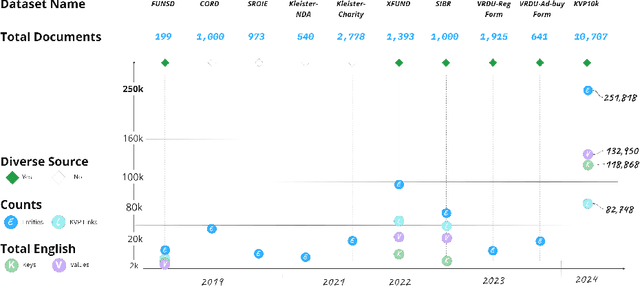

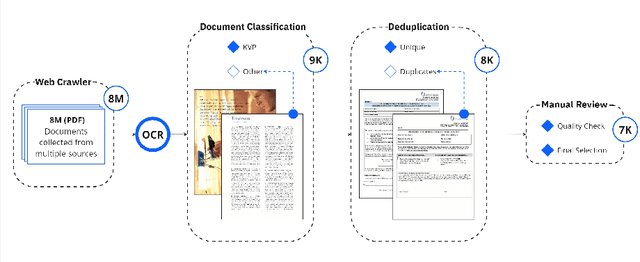
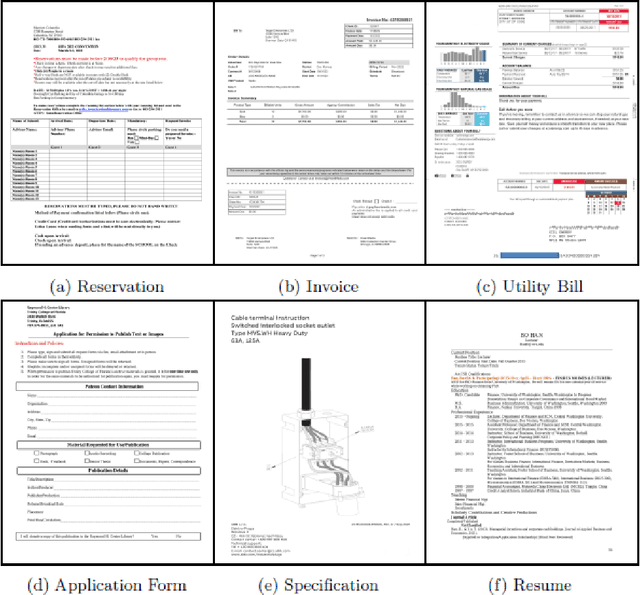
Abstract:In recent years, the challenge of extracting information from business documents has emerged as a critical task, finding applications across numerous domains. This effort has attracted substantial interest from both industry and academy, highlighting its significance in the current technological landscape. Most datasets in this area are primarily focused on Key Information Extraction (KIE), where the extraction process revolves around extracting information using a specific, predefined set of keys. Unlike most existing datasets and benchmarks, our focus is on discovering key-value pairs (KVPs) without relying on predefined keys, navigating through an array of diverse templates and complex layouts. This task presents unique challenges, primarily due to the absence of comprehensive datasets and benchmarks tailored for non-predetermined KVP extraction. To address this gap, we introduce KVP10k , a new dataset and benchmark specifically designed for KVP extraction. The dataset contains 10707 richly annotated images. In our benchmark, we also introduce a new challenging task that combines elements of KIE as well as KVP in a single task. KVP10k sets itself apart with its extensive diversity in data and richly detailed annotations, paving the way for advancements in the field of information extraction from complex business documents.
ESG Accountability Made Easy: DocQA at Your Service
Nov 30, 2023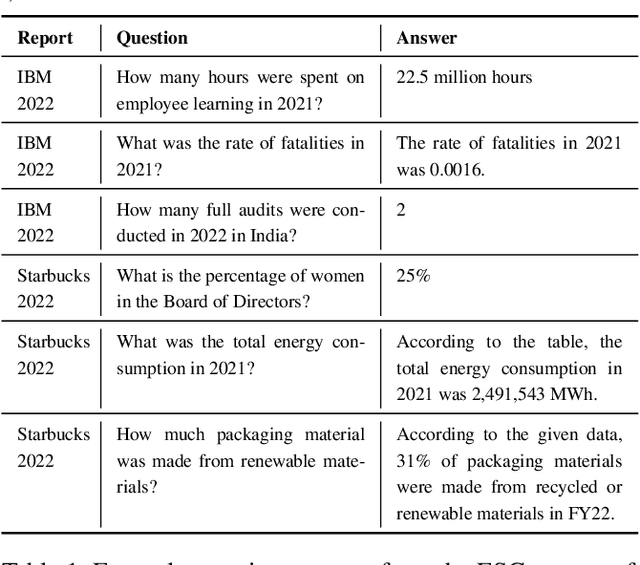

Abstract:We present Deep Search DocQA. This application enables information extraction from documents via a question-answering conversational assistant. The system integrates several technologies from different AI disciplines consisting of document conversion to machine-readable format (via computer vision), finding relevant data (via natural language processing), and formulating an eloquent response (via large language models). Users can explore over 10,000 Environmental, Social, and Governance (ESG) disclosure reports from over 2000 corporations. The Deep Search platform can be accessed at: https://ds4sd.github.io.
ICDAR 2023 Competition on Robust Layout Segmentation in Corporate Documents
May 24, 2023Abstract:Transforming documents into machine-processable representations is a challenging task due to their complex structures and variability in formats. Recovering the layout structure and content from PDF files or scanned material has remained a key problem for decades. ICDAR has a long tradition in hosting competitions to benchmark the state-of-the-art and encourage the development of novel solutions to document layout understanding. In this report, we present the results of our \textit{ICDAR 2023 Competition on Robust Layout Segmentation in Corporate Documents}, which posed the challenge to accurately segment the page layout in a broad range of document styles and domains, including corporate reports, technical literature and patents. To raise the bar over previous competitions, we engineered a hard competition dataset and proposed the recent DocLayNet dataset for training. We recorded 45 team registrations and received official submissions from 21 teams. In the presented solutions, we recognize interesting combinations of recent computer vision models, data augmentation strategies and ensemble methods to achieve remarkable accuracy in the task we posed. A clear trend towards adoption of vision-transformer based methods is evident. The results demonstrate substantial progress towards achieving robust and highly generalizing methods for document layout understanding.
Optimized Table Tokenization for Table Structure Recognition
May 05, 2023



Abstract:Extracting tables from documents is a crucial task in any document conversion pipeline. Recently, transformer-based models have demonstrated that table-structure can be recognized with impressive accuracy using Image-to-Markup-Sequence (Im2Seq) approaches. Taking only the image of a table, such models predict a sequence of tokens (e.g. in HTML, LaTeX) which represent the structure of the table. Since the token representation of the table structure has a significant impact on the accuracy and run-time performance of any Im2Seq model, we investigate in this paper how table-structure representation can be optimised. We propose a new, optimised table-structure language (OTSL) with a minimized vocabulary and specific rules. The benefits of OTSL are that it reduces the number of tokens to 5 (HTML needs 28+) and shortens the sequence length to half of HTML on average. Consequently, model accuracy improves significantly, inference time is halved compared to HTML-based models, and the predicted table structures are always syntactically correct. This in turn eliminates most post-processing needs.
FETA: Towards Specializing Foundation Models for Expert Task Applications
Sep 08, 2022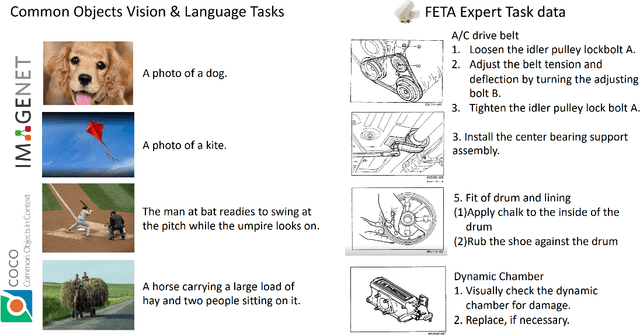

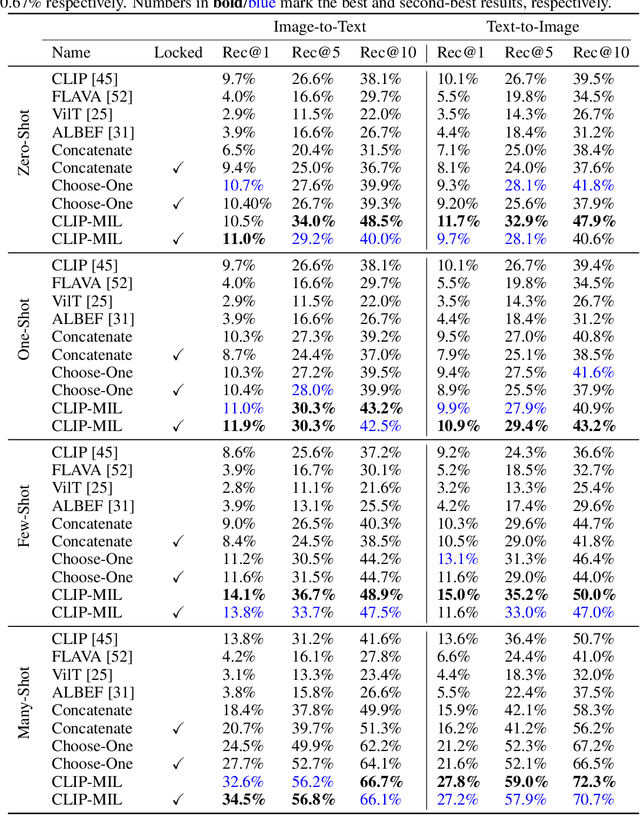
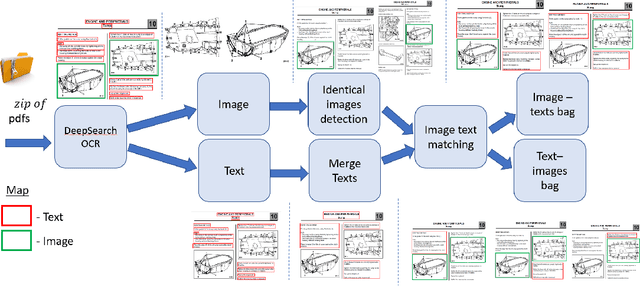
Abstract:Foundation Models (FMs) have demonstrated unprecedented capabilities including zero-shot learning, high fidelity data synthesis, and out of domain generalization. However, as we show in this paper, FMs still have poor out-of-the-box performance on expert tasks (e.g. retrieval of car manuals technical illustrations from language queries), data for which is either unseen or belonging to a long-tail part of the data distribution of the huge datasets used for FM pre-training. This underlines the necessity to explicitly evaluate and finetune FMs on such expert tasks, arguably ones that appear the most in practical real-world applications. In this paper, we propose a first of its kind FETA benchmark built around the task of teaching FMs to understand technical documentation, via learning to match their graphical illustrations to corresponding language descriptions. Our FETA benchmark focuses on text-to-image and image-to-text retrieval in public car manuals and sales catalogue brochures. FETA is equipped with a procedure for completely automatic annotation extraction (code would be released upon acceptance), allowing easy extension of FETA to more documentation types and application domains in the future. Our automatic annotation leads to an automated performance metric shown to be consistent with metrics computed on human-curated annotations (also released). We provide multiple baselines and analysis of popular FMs on FETA leading to several interesting findings that we believe would be very valuable to the FM community, paving the way towards real-world application of FMs for practical expert tasks currently 'overlooked' by standard benchmarks focusing on common objects.
DocLayNet: A Large Human-Annotated Dataset for Document-Layout Analysis
Jun 02, 2022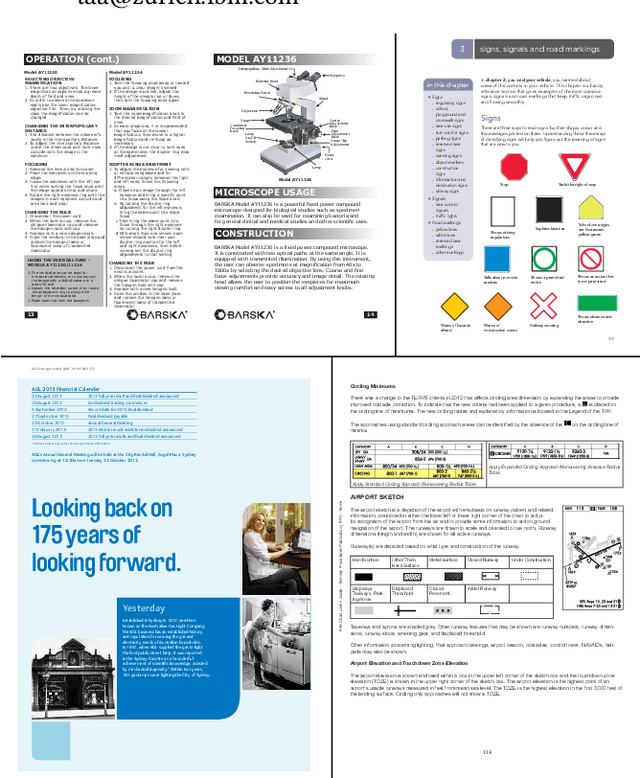
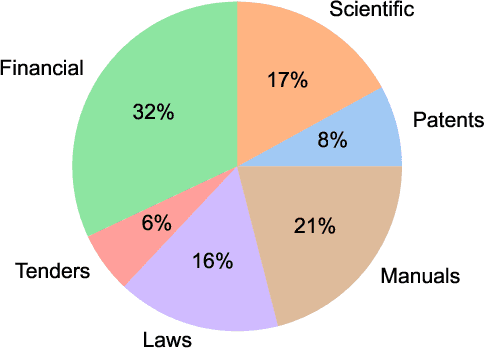
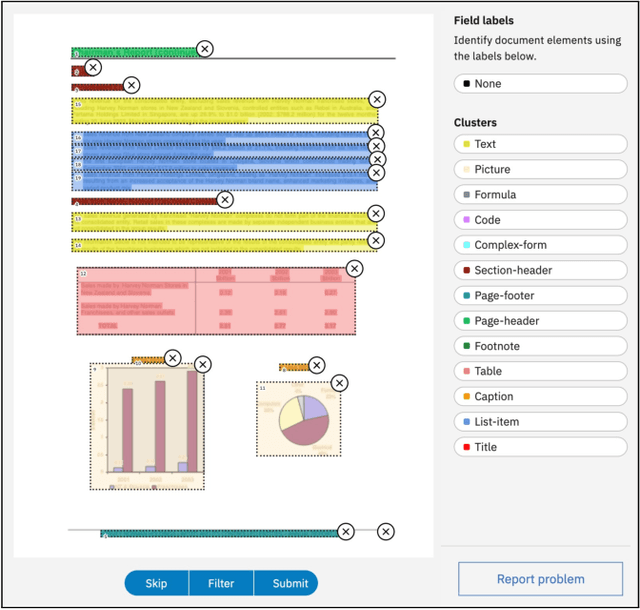
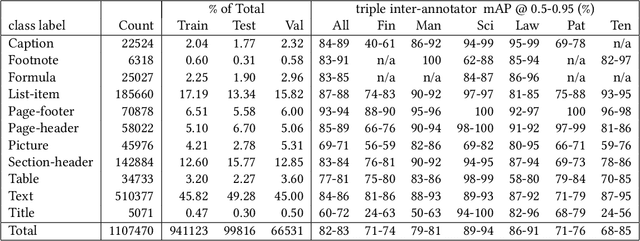
Abstract:Accurate document layout analysis is a key requirement for high-quality PDF document conversion. With the recent availability of public, large ground-truth datasets such as PubLayNet and DocBank, deep-learning models have proven to be very effective at layout detection and segmentation. While these datasets are of adequate size to train such models, they severely lack in layout variability since they are sourced from scientific article repositories such as PubMed and arXiv only. Consequently, the accuracy of the layout segmentation drops significantly when these models are applied on more challenging and diverse layouts. In this paper, we present \textit{DocLayNet}, a new, publicly available, document-layout annotation dataset in COCO format. It contains 80863 manually annotated pages from diverse data sources to represent a wide variability in layouts. For each PDF page, the layout annotations provide labelled bounding-boxes with a choice of 11 distinct classes. DocLayNet also provides a subset of double- and triple-annotated pages to determine the inter-annotator agreement. In multiple experiments, we provide baseline accuracy scores (in mAP) for a set of popular object detection models. We also demonstrate that these models fall approximately 10\% behind the inter-annotator agreement. Furthermore, we provide evidence that DocLayNet is of sufficient size. Lastly, we compare models trained on PubLayNet, DocBank and DocLayNet, showing that layout predictions of the DocLayNet-trained models are more robust and thus the preferred choice for general-purpose document-layout analysis.
Delivering Document Conversion as a Cloud Service with High Throughput and Responsiveness
Jun 01, 2022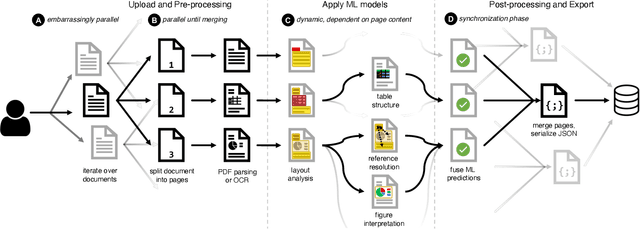
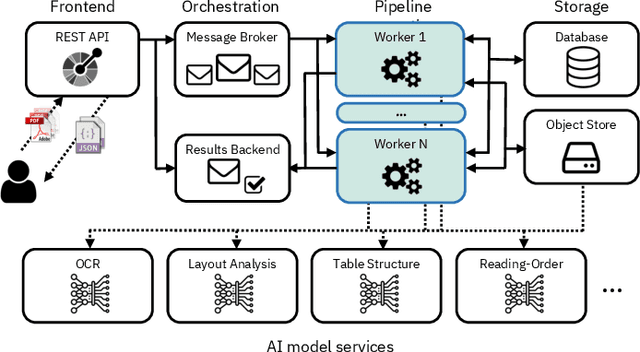
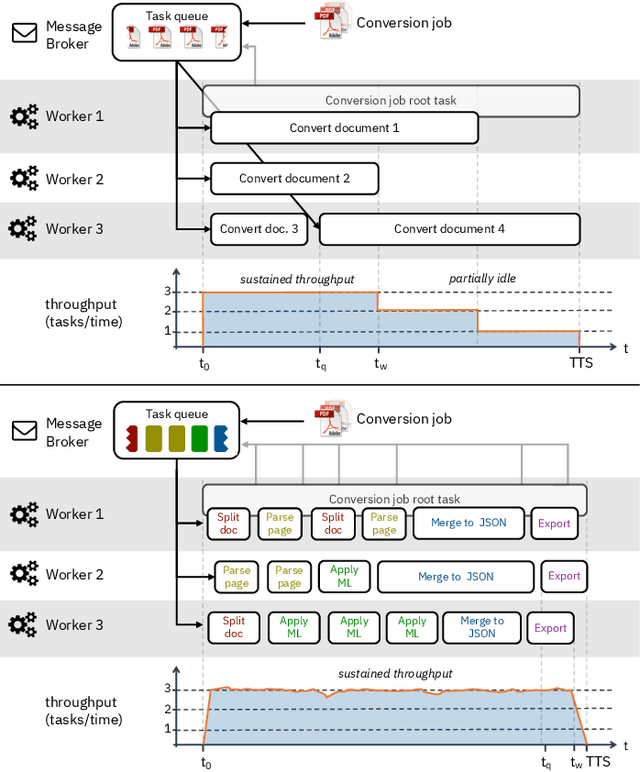
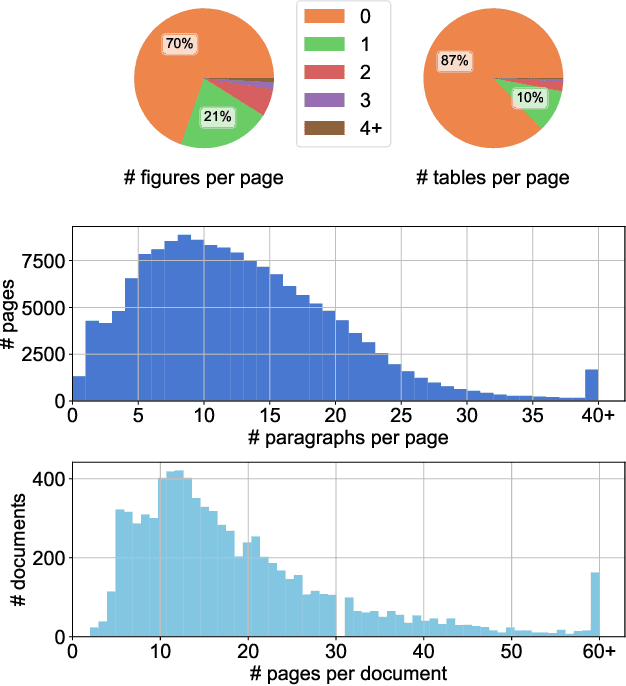
Abstract:Document understanding is a key business process in the data-driven economy since documents are central to knowledge discovery and business insights. Converting documents into a machine-processable format is a particular challenge here due to their huge variability in formats and complex structure. Accordingly, many algorithms and machine-learning methods emerged to solve particular tasks such as Optical Character Recognition (OCR), layout analysis, table-structure recovery, figure understanding, etc. We observe the adoption of such methods in document understanding solutions offered by all major cloud providers. Yet, publications outlining how such services are designed and optimized to scale in the cloud are scarce. In this paper, we focus on the case of document conversion to illustrate the particular challenges of scaling a complex data processing pipeline with a strong reliance on machine-learning methods on cloud infrastructure. Our key objective is to achieve high scalability and responsiveness for different workload profiles in a well-defined resource budget. We outline the requirements, design, and implementation choices of our document conversion service and reflect on the challenges we faced. Evidence for the scaling behavior and resource efficiency is provided for two alternative workload distribution strategies and deployment configurations. Our best-performing method achieves sustained throughput of over one million PDF pages per hour on 3072 CPU cores across 192 nodes.
 Add to Chrome
Add to Chrome Add to Firefox
Add to Firefox Add to Edge
Add to Edge